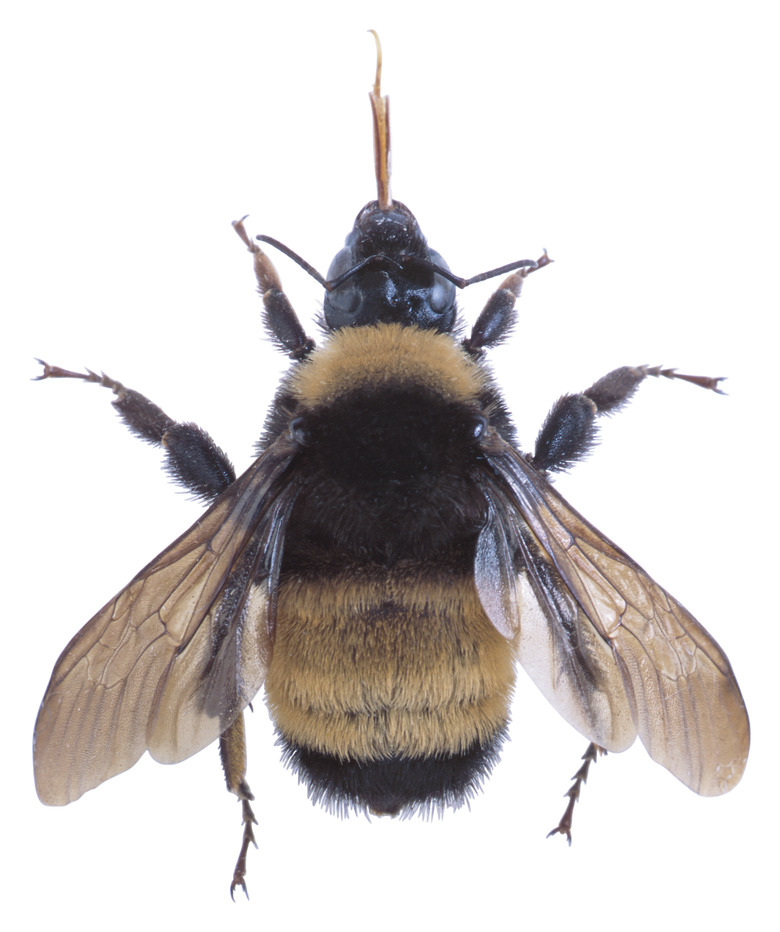How To Keep Bees Out Of Grapes
As you admire your grapevines (Vitis L.) in late summer, you may begin to notice black and yellow insects invading your crop. Honey bees, wasps, hornets, bumblebees and — most commonly — yellow jackets, are frequent pests of grapevines. These insects are attracted to the high sugar content in ripe grapes and can appear in swarms of hundreds in the last few days before harvest. While bees are considered beneficial to grapes as pollinators, yellow jackets are not; they accomplish little pollination and their stings pose a serious threat to humans. You can take a few steps to manage grapevine pests such as yellow jackets and bees. Grapes grow in all U.S. Department of Agriculture plant hardiness zones.
Step 1
Step 1
Maintain good vineyard sanitation to prevent the attraction of yellow jackets and bees, particularly in the weeks leading up to harvest. Yellow jackets and bees actively search for sugar sources in mid to late summer. Once they find a source, they forage in that area unrelentingly. To prevent an insect invasion, empty all nearby trashcans, keep empty soda and juice cans away from the site, and don't bring other types of produce near the vines.
- As you admire your grapevines (Vitis L.) in late summer, you may begin to notice black and yellow insects invading your crop.
Step 2
Step 2
Pick grape clusters as soon as they ripen to discourage yellow jackets and bees from feeding. Additionally, remove any damaged or overripe grapes from the vine
Step 3
Step 3
Make a water trap to reduce the number of yellow jackets on your grapevines early in the season. Yellow jackets are not beneficial to grapevines; unlike bees, they don't visit flowers very often; and when they do, very little pollination takes place since yellow jackets aren't fuzzy and don't have pollen baskets. Fill a 5-gallon bucket with a soapy solution of 1 part water and 2 parts liquid dish detergent. Then, secure a piece of protein such as turkey, fish, liver or ham with a piece of string 1 to 2 inches above the water. Use duct tape to fasten the string to the outsides of the bucket in order to hold the bait in place. Yellow jackets will fly down to grab the bait, fall into the water and drown. Place water traps as you would store-bought traps, away from the grapevines and areas such as picnic spots that could attract more yellow jackets.
- Pick grape clusters as soon as they ripen to discourage yellow jackets and bees from feeding.
- Additionally, remove any damaged or overripe grapes from the vine Make a water trap to reduce the number of yellow jackets on your grapevines early in the season.
Step 4
Step 4
Control any yellow jackets near the grapevines by using a lure trap or yellow jacket trap with hypytl butrate. Nests in close proximity to the grapes pose a greater risk of invasion; and while lure traps will not completely eliminate the insects, they can help decrease the number of nearby workers. In large areas, place traps approximately 200 feet away from the grapevines around the perimeter at intervals of 150 feet. In backyards, place the traps at the edge of the property, or as far away from the grapevines as possible. Most importantly, be sure to place traps between the grapevines and any known nesting sites.
Tip
When using a water trap, replace the bait every day or so. Yellow jackets prefer fresh meat.
Warning
Always wear gloves for protection when working around yellow jackets and bees. If a large population of these insects is in your area, wear head netting for additional protection.
Warning
Do not attempt to remove a nearby nest on your own. Insects such as yellow jackets and bees will attack if they sense their nest is being disturbed by either physical force or poison.
Things Needed
- Gloves
- Head netting (optional)
- Lure trap
- 5-gallon bucket
- Liquid dish detergent
- Protein such as turkey, fish, liver or ham
- String
- Duct tape
